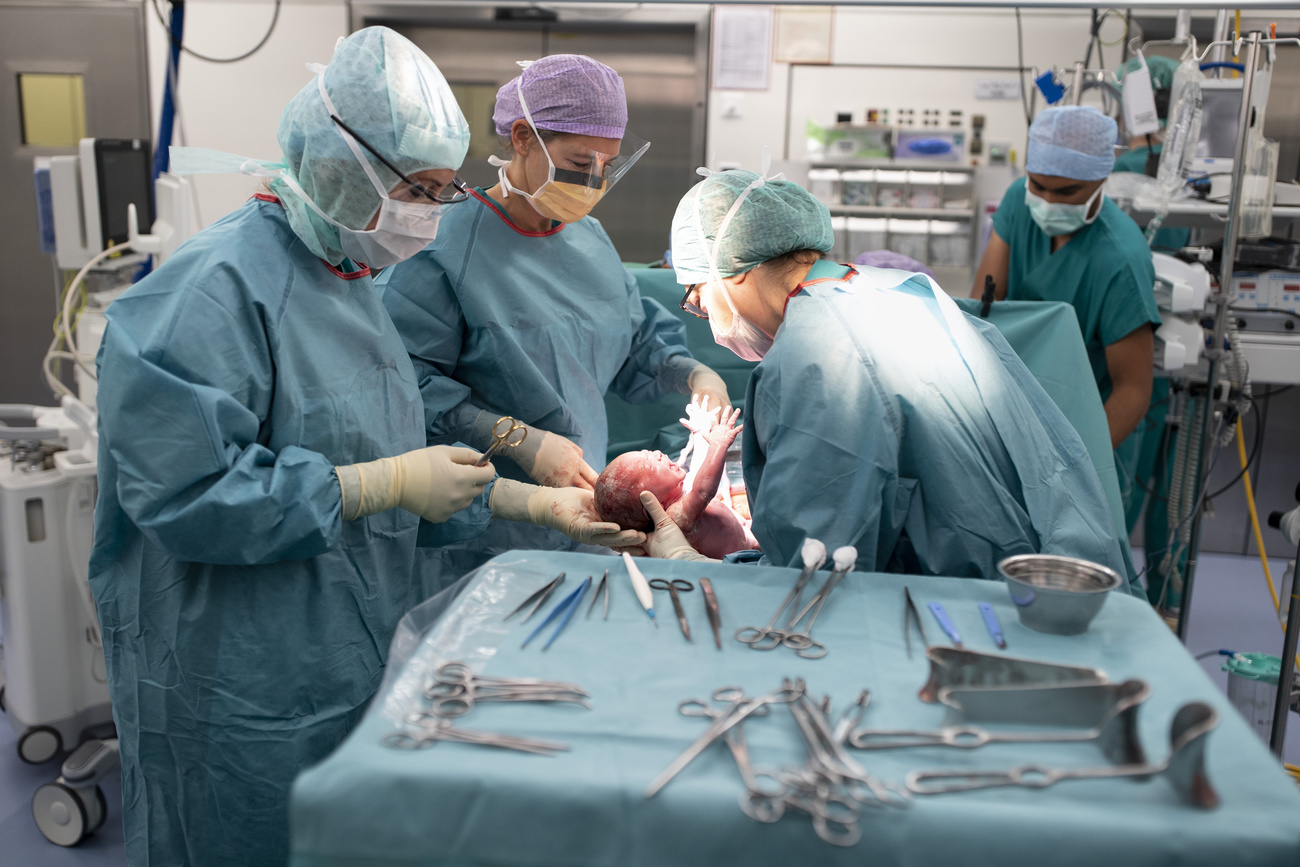
Caesareans do not guarantee better sex after delivery, says Swiss study

A study looking into long-terms effects of caesarean sections found that they are not always better than vaginal deliveries in terms of sex life after the birth of the infant.
The University Hospital in Lausanne (CHUV) conducted a study comparing incontinence and sexuality of patients who had delivered by caesarean section or vaginal delivery six years after giving birth. Contrary to popular belief, caesarean sections do not necessarily protect the sex life of the mother.
Some studies suggest that women who deliver vaginally have a higher risk of developing pelvic floor dysfunction than women who have had a caesarean section. Others, however, have not shown a benefit with C-section. The problem with these studies is that they evaluated small groups of patients and over a short period of time.
In order to have data over a long period of time, the doctors at CHUV undertook a major study on the symptoms that patients experienced six years after giving birth. Questionnaires that covered urinary, sexual or faecal symptoms were sent to more than 1,000 patients who had given birth without complications, either by caesarean section or vaginal delivery.
Surprising results
“While we expected caesarean section to protect the sexuality of our patients, we were surprised by the opposite results,” said David Baud, a doctor who led the research.
Indeed, pain during and after sex was greater after a C-section, while libido and sexual desire were the same in both groups. On the other hand, urinary complaints were more frequent six years after vaginal delivery. Finally, there was no difference in faecal symptoms between patients who delivered by caesarean section or vaginal delivery without any perineal injury.
Published in the journal Scientific Reports this week, the study highlights the advantages and disadvantages of each type of childbirth procedure. It provides clinicians with a decision-making tool to better inform pregnant women of the long-term consequences of childbirth, particularly in cases of caesarean sections at the request of the mother-to-be. More and more women are requesting a caesarean section to protect their sex life and reduce the risk of incontinence.
“In recent years, the caesarean section rate has increased dramatically to 30-35% in developed countries. It is estimated that 15% of them are performed at the request of the patient,” said Baud.

In compliance with the JTI standards
More: SWI swissinfo.ch certified by the Journalism Trust Initiative















![The four-metre-long painting "Sonntag der Bergbauern" [Sunday of the Mountain Farmers, 1923-24/26] had to be removed by a crane from the German Chancellery in Berlin for the exhibition in Bern.](https://www.swissinfo.ch/content/wp-content/uploads/sites/13/2025/12/01_Pressebild_KirchnerxKirchner.jpg?ver=a45b19f3)













You can find an overview of ongoing debates with our journalists here . Please join us!
If you want to start a conversation about a topic raised in this article or want to report factual errors, email us at english@swissinfo.ch.